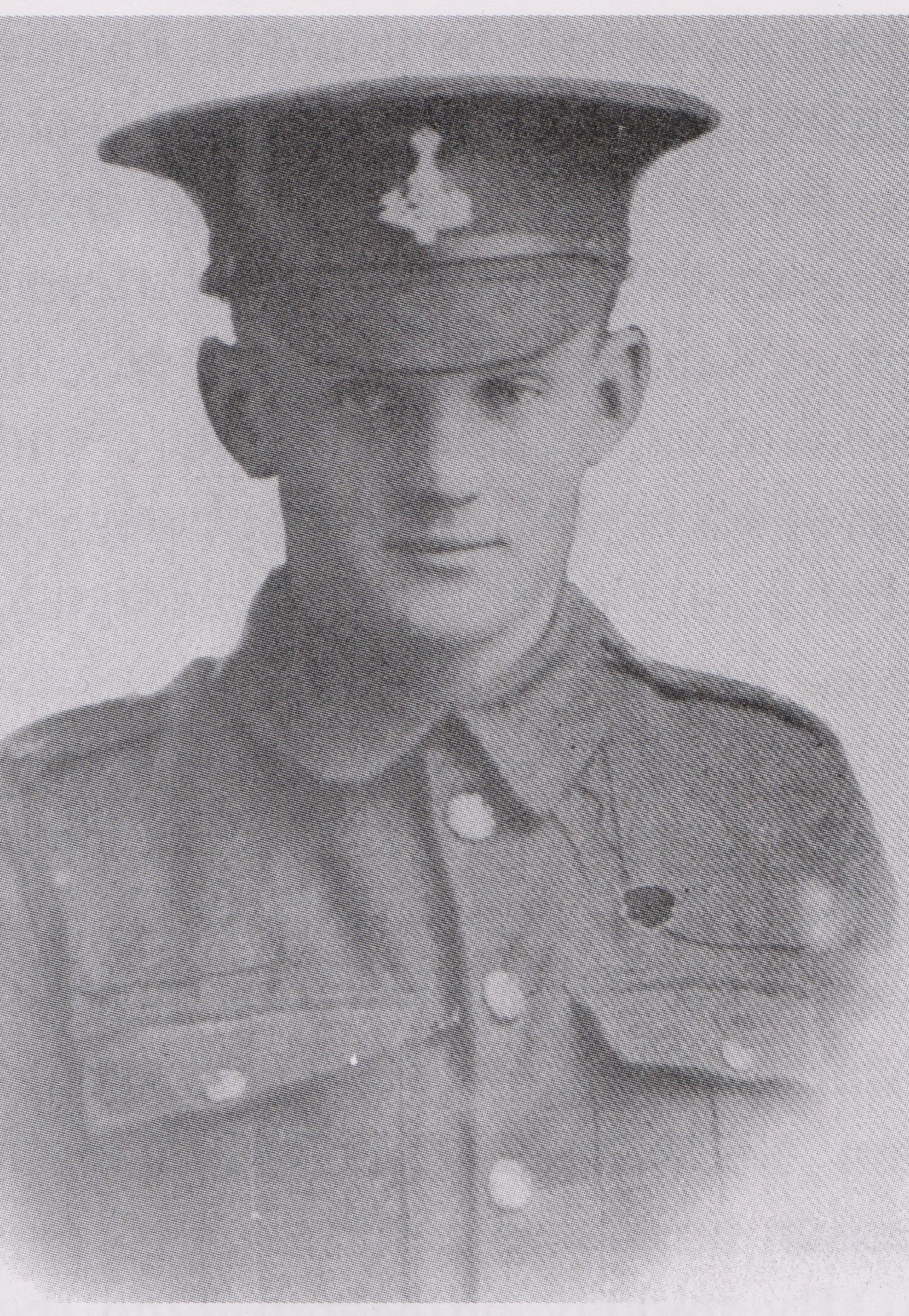
Harold was born in 1894 in Well, a small hamlet to the east of Masham in North Yorkshire. He was the eldest of five children of Thomas and Elizabeth Binks. Thomas had also been born in Well, whereas Elizabeth was from Thornton Watlass near Bedale. Thomas was employed as a gamekeeper on the nearby estate of Snape Park.
Harold enlisted in Leyburn in 1915 and joined the 13th Battalion Yorkshire Regiment. The Battalion mobilised and arrived in France on June 6th 1916. The Battalion went into the front line near Loos and would see action at The Battle of Ancre on the Somme. In 1917 they saw action during the German retreat to the Hindenburg Line and at the Battle of Cambrai.
March 21st 1918 saw the start of the German Spring Offensive. At the action between Arras and Bapaume on the 22nd March Private Harold Binks was killed. His body was never recovered. He is commemorated on the Arras Memorial. He was 23 years of age.
Explore more memories from the ribbon
-
Captain Thomas Ernest Dufty
Captain Thomas Ernest Dufty 5th Battalion Yorkshire Regiment Captain Dufty was born in on the 30th of June 1880. His father was Arthur Richard Sykes Dufty and his mother was called Katie. He was educated at Pocklington Grammar School. He joined the 5th Battalion in 1912 and became a lieutenant in June 1913. Prior to this his profession was as a banker and manager of the Bridlington branch of the London Joint Stock Bank. Dufty was promoted to Captain on the 18th of April 1915. He was reported as killed in action on or about the 19th of May 1915 (killed by a shell). His Battalion had been deployed to Sanctuary Wood (1.9 miles east of Ypres). He left a widow, Beatrice, and a 4-year-old son Arthur Richard. He is buried at the Vlamertinghe Military Cemetery in Belgium and commemorated at the Manor Road Cemetery Scarborough.
-
Sister Kate Luard
Sister Katherine (Kate) Evelyn Luard Kate was born in Averley Essex on the 29th June 1872, the daughter of the vicar and the tenth of thirteen children. Her childhood was spent at Aveley Vicarage and then Birch Rectory near Colchester. Between 1887 and 1890 she attended Croydon High School for Girls. Her headmistress and school founder, Dorinda Neligan, had been a nurse in the Franco-Prussian war of 1870/1, as well as being a suffragette and campaigner for women’s rights. She may well have been the inspiration for Katherine’s desire to go into nursing. On leaving school Kate took various jobs to earn money to train as a nurse. This she did at Kings College Hospital in London. In 1900 she served with the Army Nursing Service for two years in South Africa during the 2nd Boer War of 1899-1902. Following nursing work at home, on the 6th August 1914, aged 42, Kate enlisted in the Queen Alexandra’s Imperial Military Nursing Service Reserve. Kate served in France until 1918, firstly on ambulance trains then at Casualty Clearing Stations. She was awarded the Royal Red Cross and Bar, and was twice mentioned in dispatches for gallant and distinguished service in the field. Her various letters to her family at home were published in two books: ‘Diary of a Nursing Sister on the Western Front 1914-15’, published anonymously in 1915, and ‘Unknown Warriors: The Letters of Kate Luard RRC and Bar, Nursing Sister in France 1914-1918’ first published in 1930. Kate never married…
-
Captain Frank Woodcock
Captain Frank Woodcock 5th Battalion of the Yorkshire Regiment Captain Woodcock, who was only 22 years of age, was the youngest son of John and Elizabeth Woodcock of Driffield Yorkshire. He was killed in action during an assault on the 15th of September 1916. Frank was one of 6 children having 2 brothers and 3 sisters, the family must have been “comfortably off” because the 1901 census records his father as “living on his own means” and they had a servant called Margaret. He was educated at Bridlington School, where he was in the Officer Training Corps (O.T.C.). He became a Second Lieutenant in a Territorial Battalion in December 1912. He was promoted Lieutenant in April 1914 and then to Captain in May 1915. The Regimental Gazette recorded his death as follows: “The death of Captain Woodcock deprives his battalion of a very capable Company Commander and a very popular Officer. Despite his youth, he very soon proved himself an Officer of much resource and dauntless courage. He was wounded when wiring in front of the trenches in July 1915, and returned to France in January 1916 when he succeeded to the command of a Company. It was in this capacity that he showed himself a cool and capable Commander with great initiative and pluck, always setting a fine example to his men when any dangerous work had to be performed. He was twice mentioned in despatches. Captain Woodcock is buried at Flatiron Copse cemetery in France.
